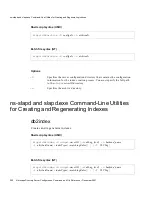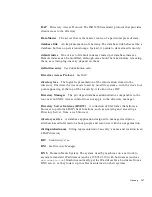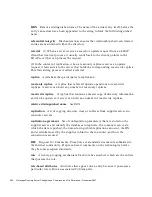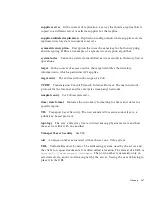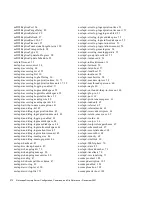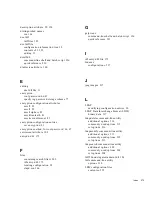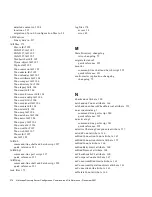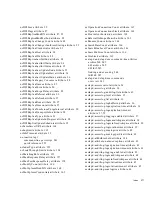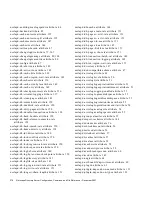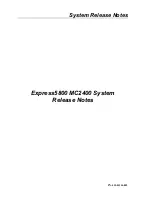
Glossary
263
permission
In the context of access control, the permission states whether access
to the directory information is granted or denied, and the level of access that is
granted or denied. See access rights.
PDU
Protocol Data Unit. Encoded messages which form the basis of data
exchanges between SNMP devices.
pointer CoS
A pointer CoS identifies the template entry using the template DN
only.
presence index
Allows you to search for entries that contain a specific indexed
attribute.
protocol
A set of rules that describes how devices on a network exchange
information.
protocol data unit
See PDU.
proxy authentication
A special form of authentication where the user requesting
access to the directory does not bind with its own DN but with a proxy DN.
proxy DN
Used with proxied authorization. The proxy DN is the DN of an entry
that has access permissions to the target on which the client-application is
attempting to perform an operation.
PTA
Pass-through authentication. Mechanism by which one directory server
consults another to check bind credentials.
PTA directory server
In pass-through authentication (PTA), the PTA directory
server is the server that sends (passes through) bind requests it receives to the
authenticating directory server.
PTA LDAP URL
In pass-through authentication, the URL that defines the
authenticating directory server, pass-through subtree(s) and optional parameters.
RAM
Random access memory. The physical semiconductor-based memory in a
computer. Information stored in RAM is lost when the computer is shut down.
rc.local
A file on Unix machines that describes programs that are run when the
machine starts. It is also called
/etc/rc.local
because of its location.


